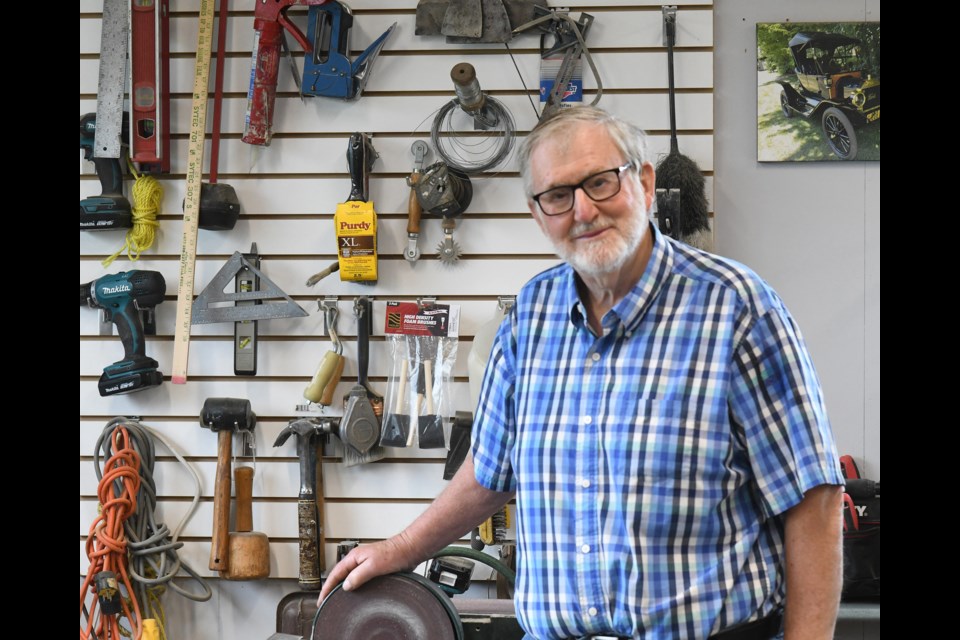It’s been almost seven years since Brian Jackson sat in on a Barrie city council meeting.
For someone who has lived in two municipalities while in the same house for 37 years and is now in a third town — that would be Thornton in Essa Township — Jackson and his wife Patsy have technically had a few address changes.
He’s watched the multi-ring circus that is municipal politics from both a politician’s seat and a resident’s point of view.
First elected to Innisfil council in 1988, representing an area that included the hamlet of St. Paul’s where the couple built their house, Jackson became mayor in 1997 and was in the hot seat during negotiations that would eventually see 2,300 hectares of northern Innisfil annexed to Barrie effective Jan. 1, 2010.
On that day, the mayor of Innisfil became a Barrie resident and nine months later he was Barrie city council's Ward 9 representative.
The process of the annexation, officially known as the Barrie-Innisfil Boundary Adjustment Act, 2009, was a complicated one.
“I think it was driven by the City of Barrie eventually wanting to expand,” Jackson tells BarrieToday. “They went to the province, the province got involved and when it was all done, the province really adjusted the boundary lines.
“At one time on the original annexation proposal, our house, which sat on a half-lot line between two concessions, actually remained in Innsifil," he says. “Then they re-adjusted it and moved (the southern boundary) to Lockhart Road, which threw us into the City of Barrie.”
He describes that period as a difficult time.
Jackson had a meeting with George Smitherman who, at that time, was minister of energy and infrastructure in the provincial government under then-premier Dalton McGuinty.
"He told me what was going to happen," says Jackson, who was urged not to repeat the development. "He was quite blunt and straight up about it.
“It was really driven by the province. And it was driven by a lot of the development community. They wanted to expand and grow," he says.
By Jackson’s own account , and he’s quick to say he’s not 100 per cent sure on the actual number, there have been 12 annexations of Innisfil land — whether it was a township or a town at the time — by Barrie over the last 130 years, give or take.
“Annexation and expansion is really a difficult thing because the municipality sets guidelines and policies in place for development and planning of land,” he says.
“On the other side, developers have plans and thoughts about how they’re going to develop a community and then it becomes the municipality’s responsibility to ensure the guidelines are adhered to and develop a community the residents want," Jackson adds.
That would be at least part of the reason Jackson wanted a seat at the Barrie council table.
“I had a concern for the hamlet of St. Paul’s, because we were sort of on the edge of the City of Barrie when it came to boundary adjustment. I always had the feeling they were sort of left out and forgotten,” he says. “The roads weren’t as well maintained as they were when the county and the town were doing it.”
There have been big changes with Mapleview Drive East and the accompanying developments, Jackson says.
“That’s what prompted us to start looking for somewhere else to live because Yonge Street through St. Paul’s will be a continuation of (the four-lane) Yonge Street north of Mapleview. That’s going to be a very busy spot to live,” he says.
“We decided we didn’t want that lifestyle (and) that we were going to look somewhere else and do something different.”
So just how have residents been served from the changes wrought on by the Barrie-Innisfil Boundary Adjustment Act?
“Now, it’s interesting in the annexed lands. (Some of it is) going to be kind of a live/walk community through there, which is probably a good thing, but it’s going to have a dramatic impact on the landscape, especially south of Mapleview Drive,” he says.
Jackson also says it’s sad to see some of the area’s treasures mowed down, describing some of the remnants of the nearby Carpe Diem orchard that “have gone to rat and ruin” in the process.
“Development causes some angst with people and they don’t always have an opportunity for some really serious input. Sometimes the scope of things gets beyond them,” Jackson says. “Planning is not simple for everyone to try and comprehend and understand.”
But he would encourage residents in both communities he has served to take a more active role in the politics that shape their lives.
“I don’t think people are involved enough in any level of government, especially municipal government. They don’t take enough interest to get involved in the planning process or even the financial aspects of it,” Jackson says. “They should be paying a lot of attention to what goes on. It affects their lifestyle dramatically.
“To me, it’s really important to know what’s happening with your tax dollar.”
